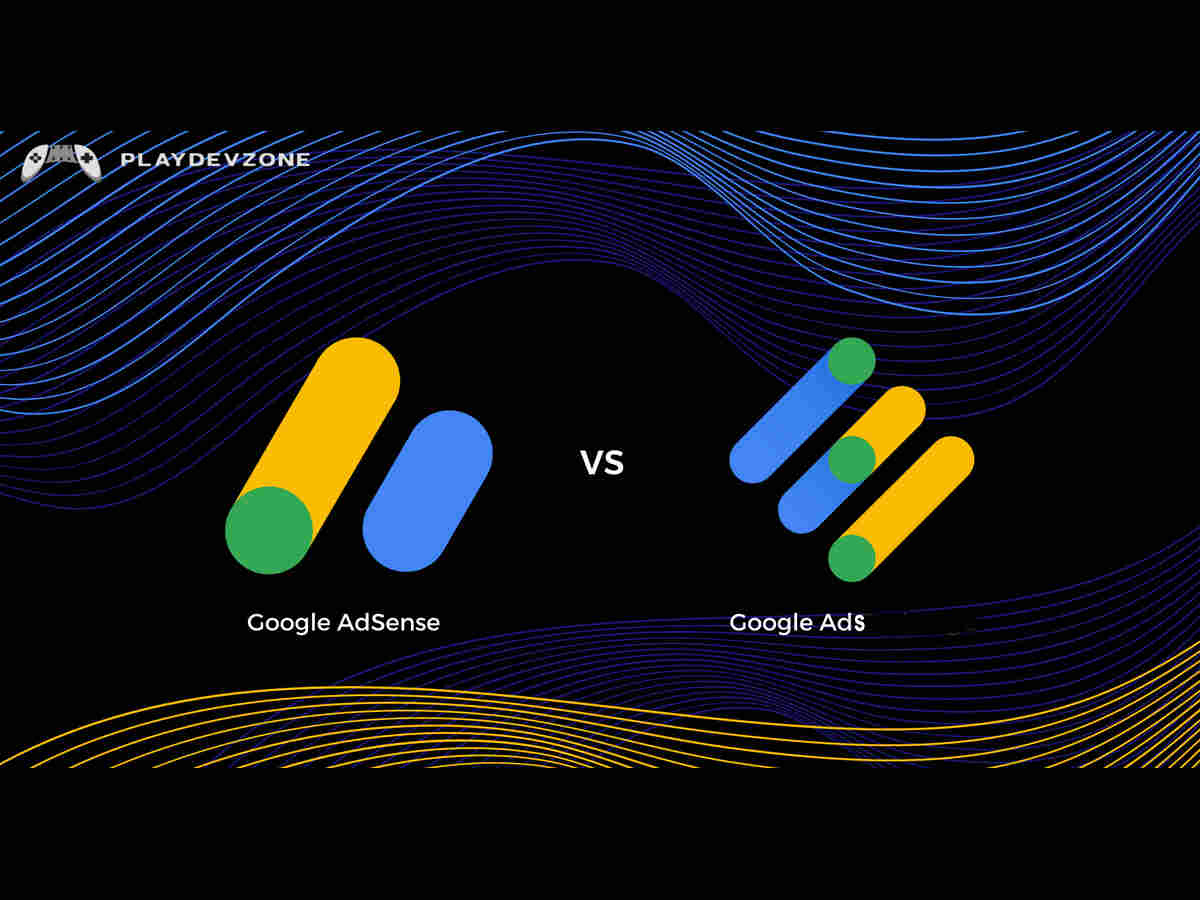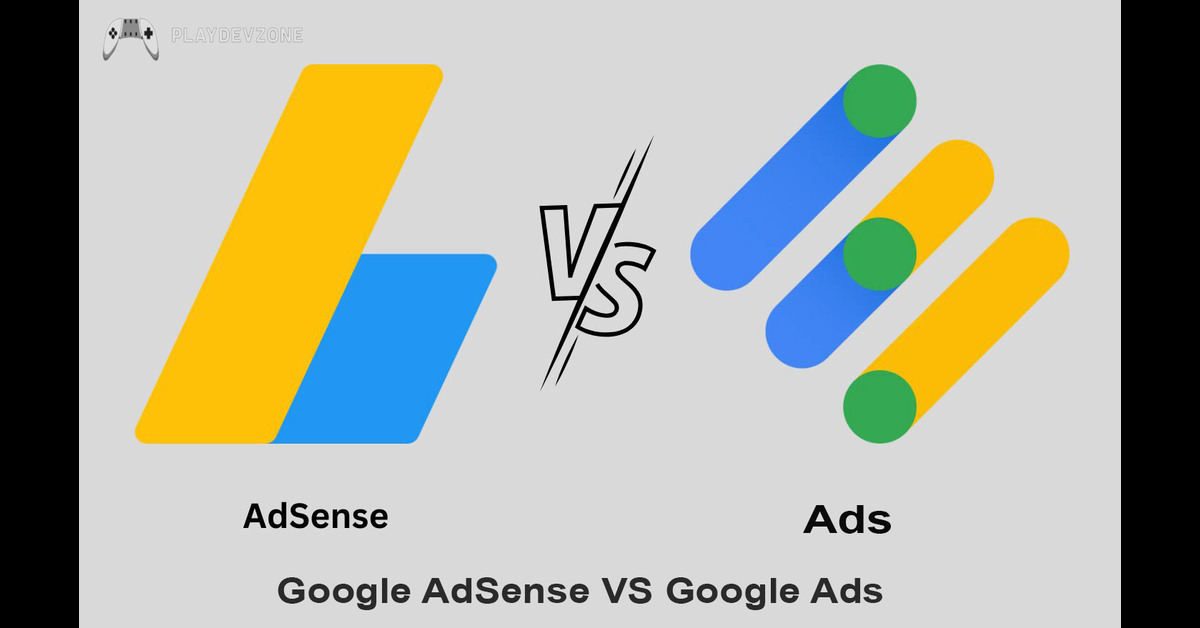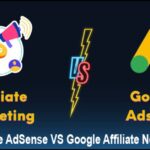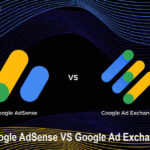If you're a content creator, website owner, or digital publisher, chances are you've come across two major platforms in the online advertising world: Google AdSense and Google Ads (Google AdSense vs Google Ads).
While both are products of Google, they serve very different purposes.
But when it comes to driving revenue for publishers, which one truly delivers better results?

In this in-depth comparison of Google AdSense vs Google Ads, we'll break down how each platform works, its earning potential, and which one is better suited for maximizing your publishing revenue.
Whether you're just starting or looking to optimize your monetization strategy, understanding the key differences can make all the difference in your bottom line.
What is Google AdSense?
Google AdSense is a free advertising program that allows website owners and bloggers to earn money by displaying ads on their content.
Google automatically generates these ads, which can be text, images, videos, or interactive media relevant to the content and audience (Google AdSense vs Google Ads).
The publisher earns a share of the advertising revenue when visitors view or click on the ads.
It’s one of the easiest ways for content creators to monetize their traffic without selling products or services.
Whether you run a blog, news site, or niche content hub, AdSense helps turn your content into passive income by connecting your audience with relevant advertisers.
AdSense is especially popular for its simplicity, user-friendly setup, and reliable payments from Google.
What is Google Ads?
Google Ads is Google’s online advertising platform that allows businesses and individuals to promote their products, services, or content across Google Search, YouTube, and millions of partner websites.
With Google Ads, you can create highly targeted campaigns based on location, interests, demographics, and search intent, making it a powerful tool for driving traffic, generating leads, or increasing sales (Google AdSense vs Google Ads).
Unlike Google AdSense, which helps publishers earn from displaying ads, Google Ads is for those who want to pay to promote their offerings.
Whether you’re a small business owner, an eCommerce brand, or a content creator, Google Ads gives you complete control over your budget and audience targeting, making it one of the most effective digital marketing tools.
Revenue Comparison: Which Pays More for Publishers?
Regarding generating income, Google AdSense and Google Ads operate differently, making the revenue comparison essential for publishers.
Google AdSense allows publishers to earn passive income by displaying relevant website ads, with earnings based on clicks or impressions (Google AdSense vs Google Ads).
The amount earned depends heavily on niche, traffic quality, and ad placement.
On the other hand, Google Ads is primarily an advertising platform where advertisers pay to promote their products, meaning publishers don’t earn directly from it unless involved in ad arbitrage or affiliate marketing strategies.
For most publishers, AdSense remains the more straightforward and reliable source of revenue.
Ultimately, the best choice depends on your site’s traffic, content type, and monetization goals. Testing both can help identify which drives better revenue for your unique audience.
Real-World Scenarios & Use Cases
Understanding how Google AdSense and Google Ads perform in real-world situations helps publishers make smarter decisions.
For example, a high-traffic blog focused on organic content often thrives with Google AdSense, as relevant ads generate steady passive income without extra effort.
Conversely, an eCommerce site or affiliate marketer might leverage Google Ads to actively drive targeted visitors, boosting conversions and sales through paid campaigns (Google AdSense vs Google Ads).
Some savvy publishers even combine both, using AdSense to monetize existing traffic while running Google Ads campaigns to attract new visitors or promote specific products.
These strategies highlight that choosing between the two depends on your unique goals, traffic sources, and business model.
By analyzing these use cases, publishers can tailor their monetization strategy for maximum revenue.
Tips to Maximize Revenue as a Publisher
Maximizing revenue as a publisher requires innovative strategies and ongoing optimization.
First, focus on optimizing your Google AdSense ad placements—placing ads above the fold and near engaging content can boost click-through rates significantly.
Next, ensure your website loads quickly and is mobile-friendly, as user experience directly impacts ad performance.
Diversify your income by combining AdSense with affiliate marketing or sponsored content to reduce reliance on a single source (Google AdSense vs Google Ads).
For publishers using Google Ads, targeting the right audience with carefully crafted campaigns improves ROI.
Regularly analyze your traffic and revenue data to identify what works and make informed adjustments.
By applying these tips, publishers can unlock new revenue streams and turn their content into a sustainable income source.
FAQ (Frequently Asked Questions)
What generates the most revenue for Google?
Most of Google’s revenue comes from its advertising platforms, with Google Ads being the primary driver.
Businesses worldwide use Google Ads to promote their products and services across Google Search, YouTube, and millions of partner websites, paying for clicks or impressions. This pay-per-click (PPC) model generates billions annually for Google.
While Google AdSense helps publishers monetize their content by displaying ads, Google earns revenue from AdSense as a share of advertiser spending through Google Ads.
Simply put, Google’s biggest revenue source is advertising fees from businesses using Google Ads, which is the cornerstone of its business model (Google AdSense vs Google Ads).
Other services like Google Cloud and hardware contribute to revenue but remain secondary compared to advertising.
What pays better than AdSense?
Several advertising platforms and monetization methods can pay better than Google AdSense, depending on your website’s niche, traffic quality, and audience engagement.
Alternatives like Media.net, Ezoic, and PropellerAds often offer higher payouts, especially for sites with significant U.S. or global traffic.
Additionally, affiliate marketing can outperform AdSense by earning commissions on sales or leads generated through your referrals.
Selling direct ad space or sponsored content also yields better revenue, as you negotiate rates directly with advertisers (Google AdSense vs Google Ads).
To maximize earnings, it’s important to test multiple options and combine strategies that align with your audience.
Diversifying income streams beyond AdSense is smart for publishers seeking higher profits.
Is there a difference between Google Ads and AdSense?
Yes, there is a significant difference between Google Ads and AdSense, though both are part of Google’s advertising ecosystem.
Google Ads is a platform where advertisers create and run paid campaigns to promote their products or services across Google’s network, including search results and partner websites (Google AdSense vs Google Ads).
Conversely, AdSense is designed for website owners and publishers who want to monetize their content by displaying relevant ads on their sites.
When visitors click these ads, publishers earn revenue. Simply put, Google Ads allows advertisers to buy ad space, while AdSense allows publishers to sell ad space.
Understanding this distinction is crucial for businesses and content creators aiming to maximize online advertising benefits.
How to earn $100 a day with Google AdSense?
Earning $100 daily with Google AdSense requires a strategic approach focused on quality content and targeted traffic.
First, create a niche website or blog that attracts a specific audience interested in valuable, engaging content (Google AdSense vs Google Ads).
To increase ad revenue, focus on high-paying keywords related to your niche. Next, drive consistent traffic through SEO, social media marketing, and email campaigns.
Optimize ad placements for better visibility without disrupting user experience. Balanced ad positioning boosts click-through rates (Google AdSense vs Google Ads).
Regularly analyze performance using AdSense reports to refine strategies.
Patience and persistence are key. Building a steady income takes time, but it is achievable with dedication and innovative marketing. Consistent effort can turn Google AdSense into a reliable daily income source.
How much does AdSense make per 1,000 views?
The amount Google AdSense makes per 1,000 views, known as RPM (Revenue Per Mille), varies widely based on factors like niche, audience location, and ad placement.
On average, publishers earn between $1 and $10 per 1,000 views, but this can be higher for competitive industries like finance or technology.
RPM depends on how many visitors click the ads and the advertisers’ bids for those clicks. Websites with highly targeted traffic and quality content typically see better earnings (Google AdSense vs Google Ads).
To maximize AdSense revenue, focus on attracting relevant visitors, optimizing ad formats, and improving site engagement.
Understanding these variables helps publishers set realistic expectations and develop strategies to boost their AdSense income effectively.
Conclusion
In conclusion, when comparing Google AdSense to Google Ads, it’s clear that Google AdSense is specifically designed to help publishers monetize their content by displaying relevant ads, making it the go-to choice for steady revenue generation.
On the other hand, Google Ads serves advertisers looking to promote their products or services, indirectly benefiting publishers through increased ad demand.
Optimizing Google AdSense placements, targeting high-paying niches, and attracting quality traffic are essential for publishers aiming to maximize revenue (Google AdSense vs Google Ads).
Ultimately, understanding the distinct roles of both platforms helps publishers make informed decisions and unlock better revenue potential from their websites.











